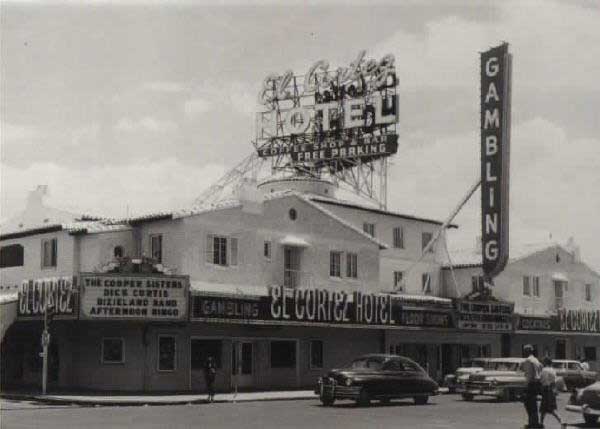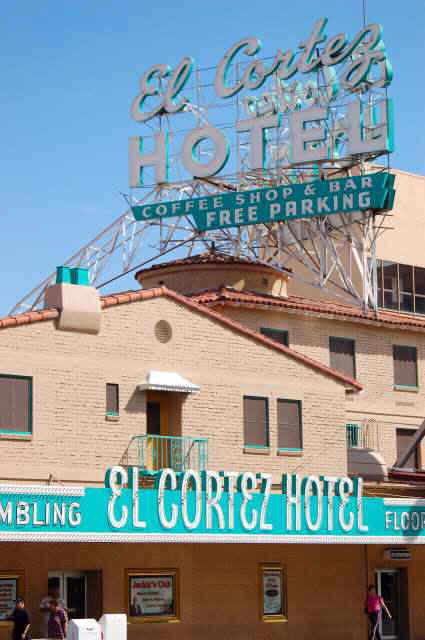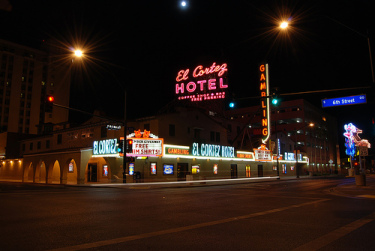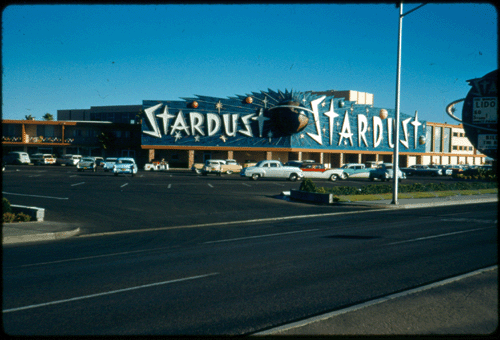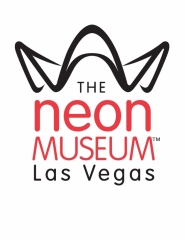
THE NEON MUSEUM TO OFFICIALLY OPEN TO THE PUBLIC ON SATURDAY, OCT. 27
Featured Attractions Include Guided Tours of Neon Boneyard,
New Visitors’ Center Inside Historic La Concha Motel Lobby
After more than 15 years of planning, the Neon Museum, a Las Vegas historical institution dedicated to the preservation and celebration of some of the city’s most distinctive architectural landmarks, will officially open its doors to the public on Saturday, Oct. 27.
The Neon Museum, home to a collection of more than 150 neon signs dating from the 1930s, is the largest collection of neon signage in the world and a unique record of Las Vegas’ colorful history. Inside a two-acre outdoor museum space known as the Neon Boneyard, iconic signs from the city’s most celebrated properties — including the Moulin Rouge, the Desert Inn, the Flamingo and the Stardust — are displayed alongside those from various other bygone restaurants, hotels and businesses.
The museum’s new visitors’ center will be located on-site in the recently rehabilitated La Concha Motel lobby, the seashell-shaped, Mid-Century Modern architectural masterpiece designed and built by architect Paul Revere Williams. Originally constructed in 1961 on Las Vegas Boulevard South, next to the Riviera Hotel’s current location, the La Concha lobby was saved from demolition in 2005 and moved to its current location in downtown Las Vegas in 2006.
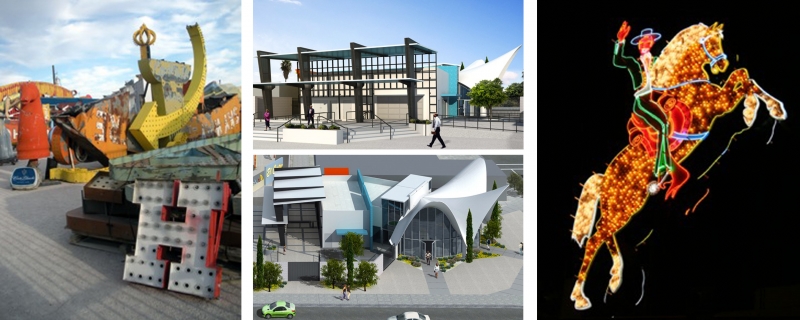
According to Bill Marion, chair, Neon Museum’s Board of Trustees, the museum’s official opening will bring both a significant cultural and economic impact to the community. “There is renewed interest in ‘old’ Las Vegas and in the rediscovery of the historical downtown area. The Neon Museum will play a major role in this renaissance by bringing new visitors to downtown Las Vegas, by creating additional opportunities for tourism growth and by adding to the ongoing economic revitalization of the area,” says Marion.
Tours of the Neon Boneyard, which last approximately 45 minutes, will be available to the public every half hour starting at 10 a.m., with the last tour departing at 4 p.m., every Monday through Saturday. Tickets are $18 for adults; $12 for students with valid ID, senior citizens, veterans and Nevada residents. Children ages 6 and under are free. Tour capacity is limited. To ensure admission on the date and time desired, visitors are advised to purchase their tickets in advance through the Neon Museum’s Web site, www.NeonMuseum.org. The La Concha Visitors Center will be open Monday through Saturday from 9:30 a.m. until 5:30 p.m. Both facilities are located at 770 Las Vegas Blvd. North, Las Vegas, NV, 89101.
“Visitors from around the world have been eagerly anticipating the Neon Museum’s opening for many years, so it gives us tremendous pleasure to be able to unveil this remarkable and historic collection to the public,” says Danielle Kelly, executive director, Neon Museum. “Our goal is to give guests an enhanced appreciation for Las Vegas’ rich visual culture while celebrating the beauty and craftsmanship of a distinctly modern art form.”
In addition to the Neon Boneyard and visitors’ center, the Neon Museum has partnered with the City of Las Vegas to create the Las Vegas Signs Project, in which restored signs from the museum’s collection have been installed on Las Vegas Boulevard between Sahara and Washington Avenues — a stretch of roadway that has been designated a National Scenic Byway by the U.S. Department of Transportation. Currently, seven restored signs from the 1950s are on display, including the Silver Slipper, the Bow & Arrow Motel, Binion’s Horseshoe, Society Cleaners, the Lucky Cuss Hotel, the Normandy Hotel and the Hacienda Horse and Rider.
The museum’s collection also includes nine restored signs installed as public art throughout the downtown area. The Downtown Gallery begins on Fremont Street at Las Vegas Blvd. and extends west toward Third Street. Signs in this gallery include Aladdin’s Lamp, The Flame Restaurant, the Chief Court Motel, Andy Anderson, The Red Barn, Wedding Information, the Nevada Motel and Dots Flowers. Further south, the 5th Street Liquor sign, located on Casino Center St. near Garces Ave., features a classic example of the type of animation that was frequently used in neon signage, and the Landmark Hotel sign, located on Paradise Road near Convention Center Dr., has been placed near the site where the iconic property stood until its demolition in 1995.
ABOUT THE NEON MUSEUM
Founded in 1996, the Neon Museum is a non-profit 501(c)3 organization dedicated to collecting, preserving, studying and exhibiting iconic Las Vegas signs for educational, historic and cultural enrichment. In addition to a two-acre outdoor exhibition space known as the Neon Boneyard, the museum also encompasses a visitors’ center housed inside the former La Concha Motel lobby as well as 16 restored signs installed as public art throughout downtown Las Vegas. Public education, outreach, research, archival preservation and a grant-funded neon sign survey represent a selection of the museum’s ongoing projects. Both the Neon Boneyard and the La Concha Visitors’ Center are located at 770 Las Vegas Blvd. North in Las Vegas. For more information, visit www.NeonMuseum.org or follow us on Facebook or Twitter.




 Original rendering for the main lobby of the Sahara
Original rendering for the main lobby of the Sahara
 Aerial view of the Sahara Hotel before the Nascar and roller coaster were added to the front.
Aerial view of the Sahara Hotel before the Nascar and roller coaster were added to the front. The original pylon sign for the Sahara
The original pylon sign for the Sahara A blast from the past, the Halloween Love-In in 1967
A blast from the past, the Halloween Love-In in 1967 Letters from the Sahara's pylon sign at the Neon Museum
Letters from the Sahara's pylon sign at the Neon Museum


